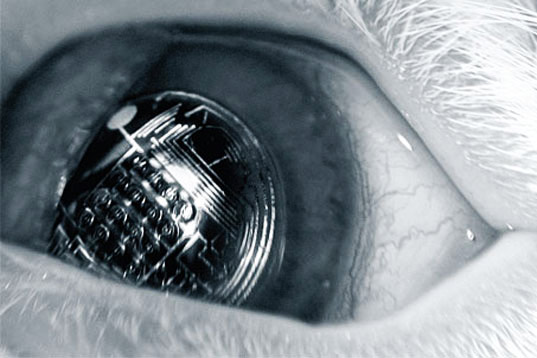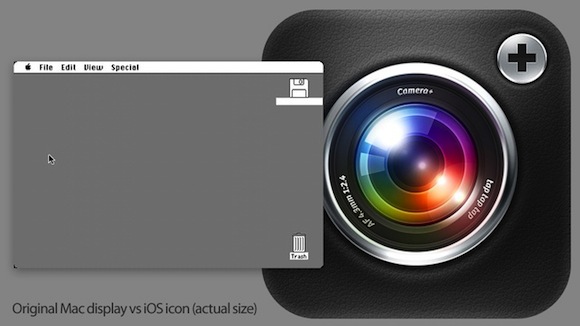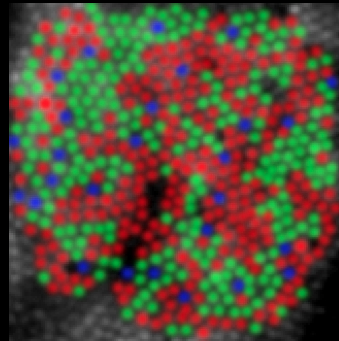Pixels are going away. Oh, there are more of them than ever, but they have become invisible. It wasn’t always so. Pixels were impossible to miss in the early days of computers, such as this shot of a Cowboy game from the Atari 2600 in the early 1980s.
![]()
In contrast, the iPad now features a “Retina Display,” so named because the pixels are so small that the human eye can no longer see individual pixles. Gizmodo recently pointed out that a single icon of on the new iPod contains more pixels than on the entire screen of the original Macintosh Computer.
(Credit: Gizmoto)
Pixels are the primary connection from machine to human. By my estimates, I spend nearly half of all open-eye hours looking at pixels. They are in our phones, televisions, tablets, computers, and even billboards. I ate a restaurant in New York where all the menu’s were iPads. Pixels are bleeding into every corner of our visual life.
A pixel is a deeply human artifact. Human eyes perceive the world through cells tuned to red, green, and blue light. Pixels are made of three filters, for red, green, and blue light. Most mammals see only blue and green. Sparrows see red, green, blue, and ultraviolet — and thus would be unimpressed with your new HDTV, no matter how big.
Pixels have come to resemble the eyes they are to seen by. Here is a human retina, with cells colored to their sensitivity:
Pixels in a screen, similarly magnified:
Pixels have been crafted to fit our eyes just as gloves fit our hands, technology shaped by the shapes of our bodies.
More often than not, pixels to win the contest of “most interesting thing in the room.” If you’ve ever tried to hold a conversation in a room with TV on, you know how hard it is to resist the pull of a screen. And now with pixels in our pockets, even the beautiful face of a dinner companion may lose out. Pixels are shapeshifters that know what we can’t resist!
Counting world totals for televisions, computers, and phones, I calculate that there are about 1,400,000,000,000,000 pixels in the world today. That’s about 200,00 for every living person.
Paradoxically, just about the time pixels will have reached every nook and cranny in the world, we won’t need them “out there” anymore! Google recently announced Google Glass, a pair of glasses with a small screen floating directly in front of the user’s eye. The machine-to-human interface just got a lot cozier.
![]()
Pixels in your face.
And if that’s not close enough Dr. Babak Parviz is developing ways to put pixels on contact lenses. He estimates they will be available in about ten years.

(Photo: University of Washington)
Pixels are part of our lives. Like me, much of your feelings in life come to you via pixels. The email from your friend, the video call with a loved one, the numbers of your bank balance, the pictures of that magically happy time from last summer. Pixels are at the center of human innovation at the moment, winning out over old-school technology like rockets to the moon. Pixels give us great powers, beyond even the gods of our fairy tales. May we learn to use them responsibly!
Links:
- “90% Of Waking Hours Spent Staring At Glowing Rectangles:” http://www.theonion.com/articles/report-90-of-waking-hours-spent-staring-at-glowing,2747/
- Wonderful RadioLab podcast on colors, in humans and other animals: http://www.radiolab.org/2012/may/21/
- Estimation of number of pixels: http://www.quora.com/Displays/How-many-pixels-are-there-in-the-world?__snids__=38707491
- Pixels on contact lens: http://spectrum.ieee.org/biomedical/bionics/augmented-reality-in-a-contact-lens/0

